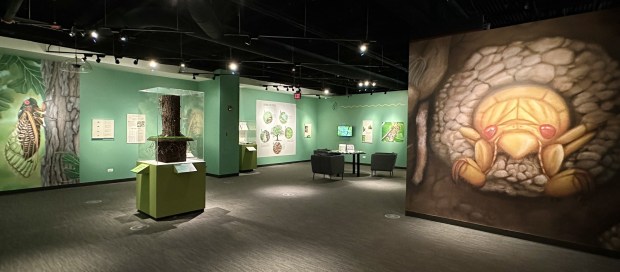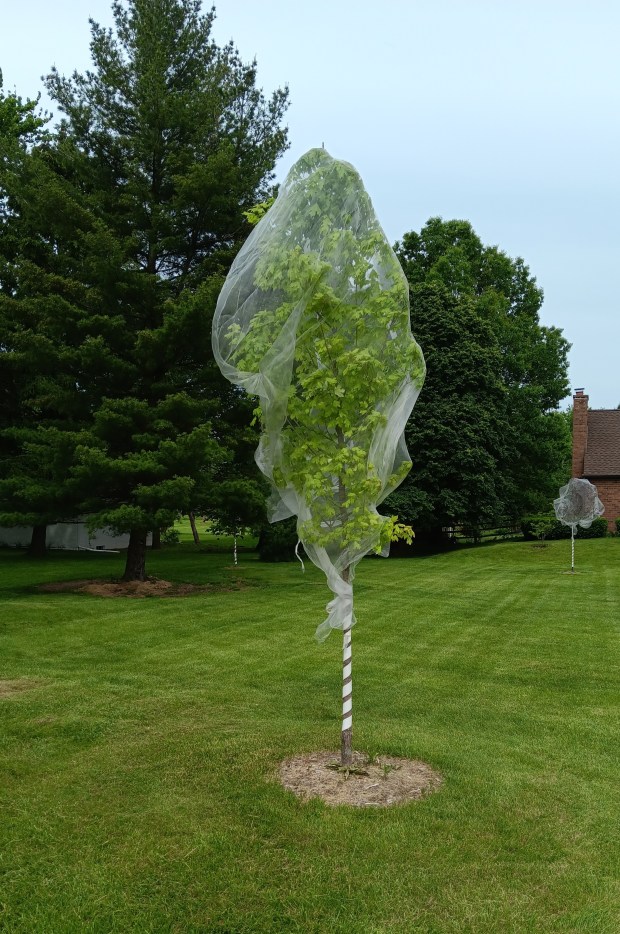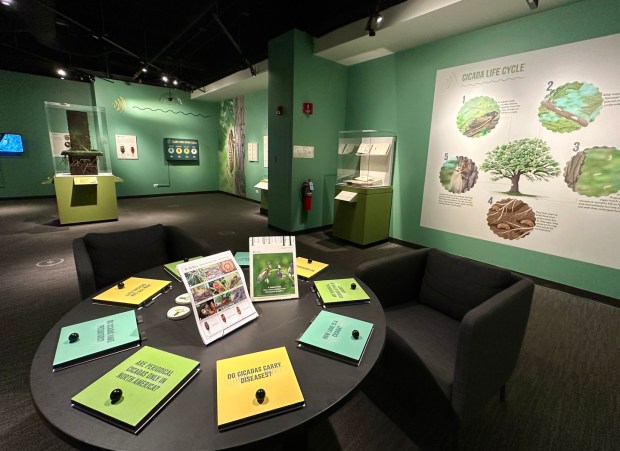In honor of their mass emergence after 17 years of hibernation, the Bess Bower Dunn Museum has unveiled a special exhibit, “Celebrating Cicadas.”
The Libertyville museum has also launched an online geographic mapping system asking Lake County residents to report their observations on sightings and locations for future use.
No one is sure why the hibernation period is 17 years, although the 2024 edition is the result of the last emergence in 2007. The museum’s staff started to plan for the event about five years ago, gather all the known information about the bug.
“The exhibit is an effort to change the view and perception of people regarding the cicada,” Alyssa Firkus, the museum’s director of education, said. “The last two emergent years were 1990 and 2007.
“The Lake County Forest Preserves District sites were the go-to places to learn about them,” she said. “As the cycle goes, we knew this would be the next big year.”
Periodical cicadas emerge from the ground to climb trees as a means of extracting themselves from their exoskeletons. For that reason, homeowners have draped protective netting over trees. the netting also halts the female cicadas from laying eggs on the tips of tree branches.
“This special exhibit offers a comprehensive exploration of this fascinating insect,” April Vaos, the museum’s environmental educator, said. “Featuring interactive displays and specimens dating back to the 1930s, visitors can learn about the cicada’s remarkable life cycle, unique sounds and ecological benefits.”
The unmistakable chirping, or singing, mating sound is created by tymbals, male abdominal organs that expand and contract. The clicking noise gets more rapid and can reach 100 decibels, comparable to a motorcycle.
“It gets pretty loud, and sounds like there are a lot of them,” Jennifer Ashley, a county resident, said. “Once you hear them, you’ll remember. It’s like crickets on steroids.”
“The emergence of periodical cicadas in such large numbers is a survival strategy known as ‘predator satiation’ that overwhelms by sheer numbers,” Vaos said. “It ensures that although many will be eaten, enough will survive to reproduce during their brief above-ground phase.”
The exhibit points out that forest preserves, parks, and yards, along with entire neighborhoods and backyards can be cicada hotspots, as millions are expected. The museum also created an online mapping system (lcfpd.org/cicada) for Lake County residents, and those in outlying areas. It pinpoints and tracks information submitted to the site.

“It’s fun because you report your observations, and you can also see what is being recorded,” Firkus said. “The data is used in collaborating maps that will be made this year.
“We will have a better understanding of where they emerge, how many, and the kind of specific emergence in different parts of the county,” she said.
A cicada-related website (lcfpd.org/education/cicadas/) has educational materials, including videos, graphs and downloadable coloring pages.
“This is the big year, and the next one will be in 2041,” Firkus said. “We’re hoping we will have accurate mapping for the area, and we can continue to build on our knowledge. It will be fun to look back on this cycle now in another 17 years.”

The exhibit continues through August 4.
The Bess Bower Dunn Museum is part of the Lake County Forest Preserves District, and is located at 1899 W. Winchester Road.




